Tractor Attachment Reviews: Maximizing Productivity and Versatility
- July 4, 2023
- 1 comment
Tractor attachments are game-changers for farming and landscaping, turning your tractor into a versatile, multitasking machine. With the right tools, your tractor can become a soil tiller, trench digger, or even a fertilizer spreader—all by swapping out attachments. These add-ons make tackling tough jobs faster, easier, and more efficient.

In this guide, we’ll explore the best tractor attachments, breaking down their features, benefits, and potential drawbacks. From compact tractor attachments to utility tractor implements, you’ll discover which tools can maximize productivity and make the most of your investment. Plus, we’ll share expert tips to help you choose the right small tractor accessories for your specific needs.
Whether you’re a farmer looking to boost efficiency or a landscaper aiming for precision, this guide will show you how to turbocharge your tractor’s performance with the right garden tractor attachments.
1. Rotary Tillers
Rotary tillers have been a game-changer for me when it comes to preparing the soil for planting. Whether I’m starting a garden or working on a larger crop field, these PTO-powered attachments save time and effort by breaking up and aerating even tough, clumpy soil.

With adjustable depths and various widths to match tractor horsepower, they’re incredibly versatile. That said, I’ve learned they’re best suited for larger plots smaller gardens might not justify the investment. While I love their efficiency, I’m also mindful of avoiding overuse to protect the soil’s structure in the long run.
2. Backhoes
Backhoe attachments have completely changed how I tackle heavy-duty digging projects. From digging trenches to preparing ponds, these hydraulic-powered tools offer incredible depth and power some models even dig over 10 feet! They’ve saved me countless hours compared to manual labor or renting dedicated equipment.
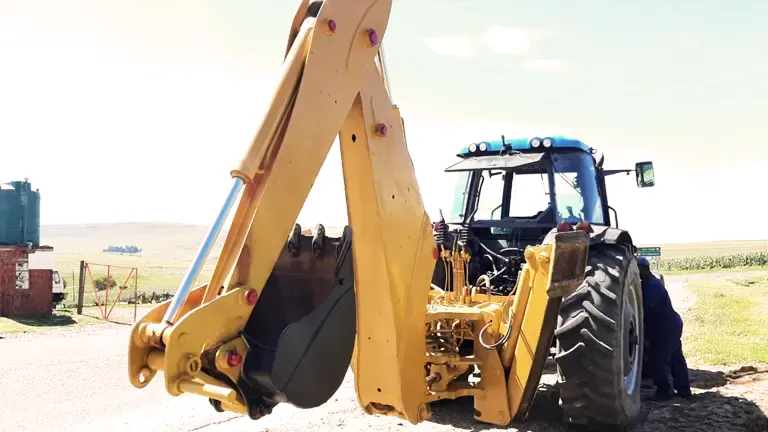
While they’re a significant investment and take some practice to operate smoothly, their efficiency and versatility make them worth it for large-scale tasks. I’ve also seen how they can improve drainage and mix soil, though I’ve learned to handle them carefully to avoid damaging the land.
3. Box Blades
Box blades have been my go-to attachment for leveling and grading land. Whether it’s smoothing out a driveway, backfilling trenches, or spreading gravel, their versatility is unmatched.

The sharp cutting edges and optional scarifiers make breaking up compacted ground a breeze, and their straightforward operation is perfect even for beginners like me. I also appreciate the replaceable cutting edges, which keep them durable for long-term use. That said, for massive grading projects or highly precise work, a dedicated grader might be the better option.
4. Rotary Cutters
Rotary cutters, or brush hogs, have been essential for tackling overgrown areas on my property. These PTO-powered attachments slice through dense grass, brush, and even small trees with ease, saving me from the hassle of using less durable tools.

I’ve found their adjustable cutting height particularly handy for managing different terrains. While they’re perfect for clearing wild vegetation, they’re not ideal for precise landscaping and do require regular blade maintenance. Plus, I’ve learned to operate them cautiously to avoid debris hazards, making them a powerful yet practical addition to my tractor.
5. Front End Loaders
Front-end loaders have been a lifesaver for heavy lifting tasks on my property. Whether it’s moving soil, gravel, or equipment, these attachments make the job faster and easier.

I love the precision control from the tractor seat, which lets me adjust the bucket’s height and angle effortlessly. They’re also beginner-friendly, with a manageable learning curve. That said, I’ve learned to be cautious about the shifted center of gravity, especially when working on slopes, to ensure safe operation. Overall, they’re a versatile and indispensable tool for any tractor owner.
6. Balers
Balers have been a game-changer for managing hay and straw on my farm. These attachments compress crops into bales, making handling, transport, and storage much more efficient.

I’ve used square balers for their easy-to-manage bales, but round balers stand out for their weather-resistant design. While their efficiency is undeniable, I’ve found that they require significant tractor power and are a substantial investment. Still, for anyone serious about crop management, a baler is an invaluable tool that pays off in the long run.
7. Bucket Elevators
Bucket elevators have proven invaluable for vertically transporting bulk materials like grain or fertilizer on my farm. With buckets attached to a chain or belt, they efficiently move materials to elevated storage or processing areas.

I’ve found them particularly useful for saving time and labor compared to manual methods. While they require proper maintenance and alignment to operate smoothly, their efficiency and reliability make them a worthwhile addition for managing bulk materials effectively.
8. Disc Harrows
Disc harrows have been a go-to tool for preparing soil before sowing. Their adjustable steel or iron discs make it easy to cut and mix the soil, ensuring better aeration and seedbed preparation.

I’ve found them particularly effective for breaking up clumps and managing tough terrain. However, I’ve learned to use them with care, as overuse or improper settings can lead to soil compaction or erosion. When used correctly, they’re an essential attachment for efficient soil management.
9. Hay Rakes
Hay rakes have been a reliable ally in organizing cut hay or straw into tidy windrows for baling. With options like wheel, rotary, or belt rakes, they allow me to control the width and density of the rows, making baling faster and more efficient.

However, I’ve learned to handle them carefully to avoid picking up soil or damaging the crops. When used properly, hay rakes are indispensable for streamlined hay management.
10. Mowers
Mowers have been incredibly useful for maintaining grasslands, lawns, and crop residue. With options like rotary, flail, or drum mowers, there’s a type for every need, whether it’s tackling dense vegetation or achieving a clean, manicured look.

I’ve found that choosing the right mower for the task is key—it can make a huge difference in efficiency and the final results. These attachments are truly versatile and essential for keeping landscapes well-managed.
11. Post Hole Diggers
Post-hole diggers have been a time-saver for projects like installing fences or planting trees. The PTO-driven auger drills efficiently into the ground, making quick work of what would otherwise be a labor-intensive task.

While they’re excellent for most soil types, I’ve encountered challenges in rocky or dense clay areas, which require extra effort. Overall, they’re a must-have attachment for any project requiring precise and efficient hole digging.
12. Spreaders
Spreaders have been indispensable for evenly distributing fertilizer, seeds, or manure across my fields. With options like drop-style for precise placement and broadcast-style for wider coverage, they cater to different needs effectively.

I’ve noticed how using a spreader promotes uniform crop growth while minimizing material waste. However, I’ve learned that proper calibration is essential to ensure accuracy and avoid over-application. When set up correctly, spreaders are a valuable tool for efficient field management.
13. Tillers
Tillers, including chisel and subsoiler types, have been invaluable for breaking up compacted soil layers and improving root growth. Unlike rotary tillers, these penetrate deeper into the ground, making them ideal for addressing hardpan issues.

I’ve found they require more tractor power, but the benefits enhanced soil structure and healthier crops make them well worth the effort for deeper soil management tasks.
14. Trailers
Trailers have been a game-changer for moving heavy loads around the farm. With options like flatbed, box, and tipping trailers, there’s a design for every task, from hauling produce to transporting equipment.

I’ve found them incredibly efficient for saving time and effort. That said, maneuvering trailers in tight spaces can be tricky and requires some skill, but with practice, they become an indispensable farm tool.
15. Wagons
Wagons have been a handy tool for managing lighter loads around the farm. Their open-top design makes loading and unloading quick and easy, and their smaller size offers better maneuverability compared to trailers.

While they can’t handle the same capacity, I’ve found them perfect for small-scale transport tasks where efficiency and ease of use.
Choosing the Right Tractor Attachment
Selecting the right tractor attachment isn’t just about purchasing the first shiny tool you lay eyes on. It’s about turning your tractor into a multi-functional beast that can tackle any task thrown its way, effectively and efficiently. Here’s how to navigate the sea of attachments and anchor on the one that suits your needs best:
- Assess Your Needs: Before you can identify the right attachment, you first need to pinpoint your requirements. Are you looking to sculpt the land, haul loads, or cultivate your garden? The task at hand plays a critical role in guiding your choice.
- Tractor’s Power and Size: You can’t haul a ship with a sailboat, right? Similarly, your tractor’s horsepower and physical dimensions determine what attachments it can effectively handle. Consult your tractor’s manual to understand its capabilities and limitations.
- Type of Hitch: The hitch is the interface between your tractor and its attachment. The most common types are the three-point hitch and the quick-attach system. Ensure the attachment you’re eyeing is compatible with your tractor’s hitch system.
- New vs Used: While new attachments come with a warranty and an assurance of pristine condition, used attachments can save you a considerable chunk of change. However, when purchasing used attachments, be vigilant about the wear and tear, and try to have them inspected before purchase.
- Brand Compatibility: While many attachments are universally compatible, some are brand-specific. Check to ensure the attachment you’re considering is suitable for your tractor’s make and model.
- Safety: Last but not least, safety is paramount. The attachment should be stable and have safety features to prevent accidents.
Conclusion
The choice of tractor attachments is vast and each brings unique capabilities and utilities. The right attachment can significantly enhance the productivity of your tractor, saving you time, labor, and often, cost. However, it is crucial to consider your specific requirements, the nature of your land, and your budget before investing in these tools. A wise choice of tractor attachments can truly redefine the boundaries of what your tractor can achieve.
Frequently Asked Questions
- What types of attachments can be added to a tractor?
There’s a wide variety of tractor attachments available, including loaders, backhoes, mowers, tillers, plows, spreaders, post hole diggers, buckets, bale spears, pallet forks, landscape rakes, harrows, grapples, and more. The specific attachment types your tractor can use will depend on its model and configuration. - How do I know which attachment fits my tractor?
Attachments are generally categorized by the horsepower needed to operate them effectively, the type of hitch on your tractor (like three-point hitch or quick-attach), and the physical dimensions of your tractor. Always check the manufacturer’s specifications and your tractor’s manual before purchasing an attachment. - Can I use the same attachment on different brands of tractors?
As long as the tractor and the attachment have compatible hitches and the tractor has sufficient power to operate the attachment, it’s typically possible to use attachments across different brands. However, certain attachments may be brand-specific. Always check compatibility before trying to interchange attachments. - What are PTO (Power Take Off) attachments and how do they work?
PTO attachments are tools that are powered by the tractor’s engine. The tractor’s PTO shaft transfers the tractor’s power to the attachment, enabling it to function. Examples of PTO attachments include mowers, tillers, and post-hole diggers. - What is a quick-attach system?
A quick-attach system allows for the easy and quick connection of various attachments. This system is a standard feature on many modern tractors, enabling operators to switch between different attachments without the need for additional tools or excessive manual labor. - Are there attachments for both the front and rear of the tractor?
Yes, there are attachments designed for both the front and rear of a tractor. Front-end attachments often include loaders, grapples, and buckets, while rear attachments can include mowers, tillers, plows, and sprayers. - What maintenance do tractor attachments require?
The maintenance of tractor attachments often involves regular cleaning, lubrication, and inspections for wear and tear. Specific maintenance tasks can vary based on the type of attachment and its use. - Can I build my own tractor attachments?
While it’s technically possible to build your own attachments if you have the necessary skills and equipment, it’s generally not recommended. Improperly built attachments could cause damage to your tractor, not perform as expected, or pose safety risks. - What is a three-point hitch?
A three-point hitch is a type of tractor hitch designed for attaching and stabilizing implements. The three points resemble a triangle and include the top center and the two lower hitch points. This design allows the tractor to carry the weight of the implement and control its lift and tilt. - What should I consider when buying used attachments? When buying used attachments, consider the condition (any visible damage, rust, or excessive wear), compatibility with your tractor, the reputation of the seller, and the price. It may also be worth having used attachments inspected by a professional before purchase.

David Murray
Forestry AuthorI'm David Murry, a forestry equipment specialist with a focus on chainsaw operation. With over 13 years of experience, I've honed my skills in operating and maintaining a wide range of machinery, from chainsaws to log splitters. My passion for the outdoors and commitment to sustainable forestry drive my work, which emphasizes safety, efficiency, and staying updated with industry advancements. Additionally, I'm dedicated to sharing my expertise and promoting environmental awareness within the forestry community.

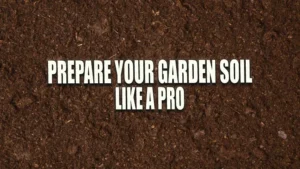
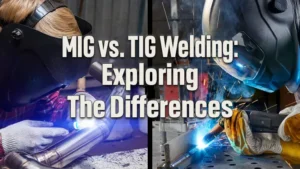

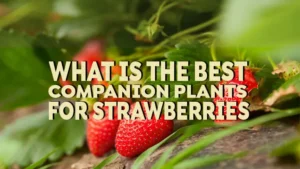
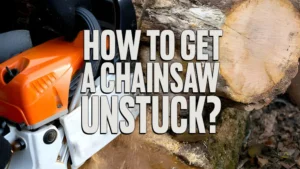
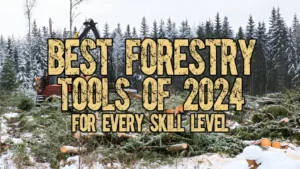
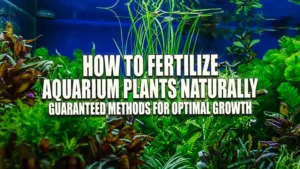




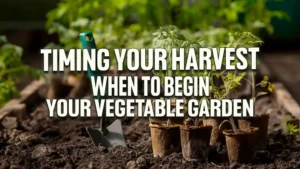
The article highlights the enduring appeal of older tractors for Midwest farmers, driven by factors like repairability, nostalgia, and affordability. While modern technology offers benefits, many farmers still rely on older models for their reliability and simplicity. The industry's incremental evolution contrasts with the transformative changes seen in the automotive sector, raising questions about when revolutionary advancements will make older tractors obsolete.
jerryrodan
March 10, 2024 7:43 pm